- Portfolio -
Spiration Incorporated - Redmond, WA
Spiration Incorporated is a small (125+ employees) medical device manufacturer located in Redmond, WA.
Website: http://www.spiration.com
Address: 6675 185th Avenue N.E. Redmond, WA 98052
Phone: 425-497-1700
Note: Spiration is now known as Olympus Respiratory America. The name change was related to the purchase of Spiration by Olympus Medical Systems of Japan.
Website: http://www.spiration.com
Address: 6675 185th Avenue N.E. Redmond, WA 98052
Phone: 425-497-1700
Note: Spiration is now known as Olympus Respiratory America. The name change was related to the purchase of Spiration by Olympus Medical Systems of Japan.
Recruited by Spiration in November of 2013
I was recruited by Spiration in late 2013 to provide company-wide information technology governance,
manage the Information Technology (I.T.) department, and complete all Systems & Network engineering,
implementation, and administration activities.
I was challenged with rectifying long-standing technology issues that were crippling employee productivity and hindering company growth.
Not an easy task under the best of conditions, and Spiration's entire information technology solution was in a very sad state. A decade of neglect, lack of knowledge, and complacency by my predecessors resulted in a barely functional infrastructure that was not reliable, scalable, or even sufficient for the company's current needs.
I was challenged with rectifying long-standing technology issues that were crippling employee productivity and hindering company growth.
Not an easy task under the best of conditions, and Spiration's entire information technology solution was in a very sad state. A decade of neglect, lack of knowledge, and complacency by my predecessors resulted in a barely functional infrastructure that was not reliable, scalable, or even sufficient for the company's current needs.
Spiration's technology issues when I joined the company
Listing all of Spiration's issues would be a tedious task. Let's just say that more was wrong than was right with regard to
the entire information technology solution at the company. Pretty much everything was a disaster. I'll keep the list under a dozen
issues to keep this section somewhat brief.
Here are some of the technology issues present when I joined Spiration:
The details above only begin to describe the incredibly bad state that Spiration was in when I took over in 2013. They were experiencing a 20% growth rate and did not have the necessary I.T. infrastructure to support their current staff. VPN issues made it difficult for remote workers to complete their work, wireless in the corporate office was basically unusable, and trying to use Internet/cloud resources was an exercise in futility. Productivity suffered greatly.
They also recently had numerous information technology department staff that were unable to correct any of their issues, and in the end, only contributed to the further decline of the infrastructure. It was bad enough that just prior to my recruitment, they had removed their prior IT Manger for poor performance and a general inability to rectify any of the company's technology issues.
Once I took over the reins for information technology at Spiration, I started the company down a path that would rectify the current issues, and lay the foundation for a robust, scalable, enterprise-class infrastructure solution that would support current needs and future growth. In addition to correcting the core infrastructure issues, I enacted/changed policies to increase network and system security, streamlined I.T. processes, reduced I.T. department expenditures, and introduced new and emerging technologies.
Here are some of the technology issues present when I joined Spiration:
- A complete lack of a unified strategic vision and plan for the company's I.T. solution.
- No hardware, software, or network device standards resulted in a difficult-to-support, and unsustainable I.T. environment.
- Complete lack of any long-term roadmaps or even goals for the end-to-end I.T. solution at the company.
- I.T. projects were handled as one-offs rather than planning for future integration, scaling, or even basic upgrades.
- I.T. Power infrastructure was insufficient for current needs, and was not scalable.
- Improperly-sized circuits and UPS devices resulted in random brownouts (and server reboots) and even a UPS catching on fire.
- Batteries in existing UPS devices were faulty and unable to maintain the systems during a power related event.
- Solution was not scalable, or even sustainable.
- Corporate wired and wireless network was barely functioning.
- Non-optimized, flat /24 wired network with multiple single points of failure.
- Non-integrated, consumer-grade wireless network that required a VPN connection for access to corporate resources.
- Wireless connection did not even have enough bandwidth to handle a Pandora stream (96Kbps). It was basically unusable.
- Legacy 4.5 Flex circuit (3x T1) for Internet connectivity (1.5Mbps for voice, 3.0Mbps for data).
- Slow throughput and access times made accessing web/cloud applications/sites tedious at best, and sometimes impossible.
- Solution was not scalable and had zero redundancy.
- I.T. department resources wasted in the policing of "no personal surfing" and "no internet radio" policies (to free up bandwidth).
- Legacy firewall/security/VPN equipment.
- No redundancy (single point of failure).
- Insufficient throughput capability (resulting in slow Internet/VPN connectivity).
- Hardware was EOL.
- Legacy Exchange 2003 environment, and the idea of Unified Communication & Collaboration was foreign to them.
- Predecessors failed in every attempt to upgrade/migrate the environment to Exchange 2010.
- While the legacy host hardware was functional, it was maxed out, and in need of replacement.
- Performance was abysmal, and the system could not scale to support company growth.
- Legacy PBX phone system.
- Hardware vendor was out of business, so there was no manufacturer support or upgrades for the system.
- System was reaching capacity, and would not be able to meet company growth requirements.
- System had a few quirks that appeared to be firmware related (no fix was available).
- Multiple versions of legacy operating systems & applications in the environment, no license tracking.
- Numerous Microsoft Windows 2000, XP, 2K Server, and 2003 server were still in production.
- Numerous legacy versions of Microsoft Office and other application still in use.
- Lack of effective license tracking resulted in being out of compliance with licensing requirements.
- Network & system security was almost non-existent.
- They used the company's name as the password for god-level network admin accounts and most critical systems.
- They stored all passwords in plain text on the company's Intranet site.
- Policies were not in place to require acceptable password complexity and expiration.
- Client and server anti-virus, security patching, and management.
- Multiple WSUS servers, none of them fully functional. GPO directed clients to non-existent WSUS servers.
- Client antivirus environment was somewhat functional, servers mostly had no anti-virus software at all.
- GPOs were a mess, contradicted each other, and mostly applied to legacy applications and operating systems.
- Client and server provisioning.
- Still used legacy drive imaging software and local USB hard drives for all client and server imaging.
- Numerous USB hard drives and no directory of images resulted in inefficient provisioning.
- No central repository resulted in numerous duplicate, but slightly different images.
The details above only begin to describe the incredibly bad state that Spiration was in when I took over in 2013. They were experiencing a 20% growth rate and did not have the necessary I.T. infrastructure to support their current staff. VPN issues made it difficult for remote workers to complete their work, wireless in the corporate office was basically unusable, and trying to use Internet/cloud resources was an exercise in futility. Productivity suffered greatly.
They also recently had numerous information technology department staff that were unable to correct any of their issues, and in the end, only contributed to the further decline of the infrastructure. It was bad enough that just prior to my recruitment, they had removed their prior IT Manger for poor performance and a general inability to rectify any of the company's technology issues.
Once I took over the reins for information technology at Spiration, I started the company down a path that would rectify the current issues, and lay the foundation for a robust, scalable, enterprise-class infrastructure solution that would support current needs and future growth. In addition to correcting the core infrastructure issues, I enacted/changed policies to increase network and system security, streamlined I.T. processes, reduced I.T. department expenditures, and introduced new and emerging technologies.
Some of my accomplishments while helping Spiration overcome their technology issues
The following are just some of my accomplishments at Spiration:
- Developed and implemented a unified strategic vision for Spiration's information technology solution.
- Engaged new vendors, introduced new technologies, and refined I.T. department processes to reduce costs.
- Implemented hardware, software, network device, and I.T. infrastructure standards.
- Engineered and implemented a scalable enterprise-class power solution for the information technology infrastructure.
- Engineered and implemented a scalable, enterprise-class, converged, seamless wired/wireless network solution with centralized management.
- Migrated from legacy ISP connectivity to modern fiber connections to increase bandwidth, add scalability, functionality (e.g. SIP trunking).
- Migrated their legacy Exchange 2003 environment to Exchange 2010 (they already owned the license), and budgeted for upgrade to 2013.
- Implemented Lync 2013 as the first step towards a unified communication and collaboration solution.
- Engineered a Cisco-based VOIP system (as part of the unified communication and collaboration solution).
- Migrated the company to Office 365 with DirSync to rectify legacy Office version, licensing, and license-tracking issues.
- Established enterprise licensing for client and server operating system licensing to rectify version, and license-tracking issues.
- Implemented Thycotic Secret Server as the secure, centralized secret database.
- Implemented Windows Deployment Services (WDS) to simplify client and server provisioning.
- Replaced paper-based conference room schedules with an interactive real-time display and scheduling solution.
- Corrected numerous I.T. infrastructure issues (e.g. implemented seismic bracing, cable management, power distribution, etc.).
The following sections contain "before and after" infrastructure pictures:
While business process improvement and security enhancements do not make for good pictures, infrastructure improvements do. With this
in mind, The following images are before and after pictures of Spiration's infrastructure. The before, is the state of things when I
joined Spiration. The after, are the state of things under my direction.
Spiration's Server Room - Front View
Server Room, Front - Before: (This was the state of the "Server Room" when I joined Spiration (note: cabinets are not even secured to floor))
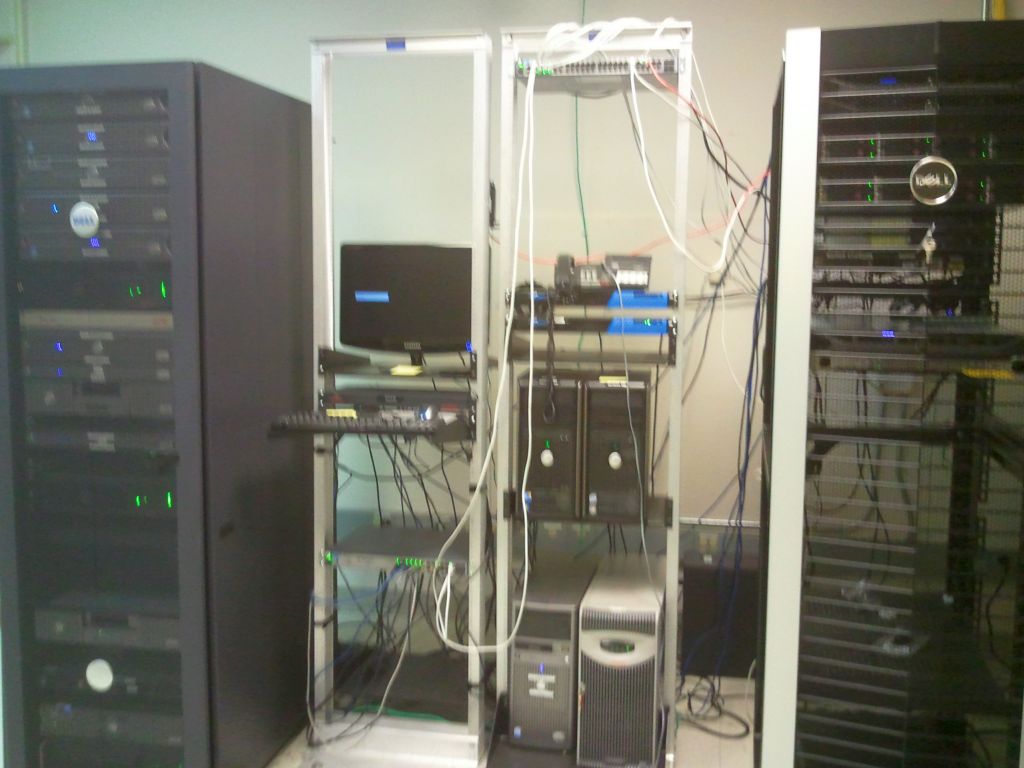
Server Room, Front - After: (Note: space between cabinets was necessary (floor loading restraints), and 2 tower servers awaiting replacement)
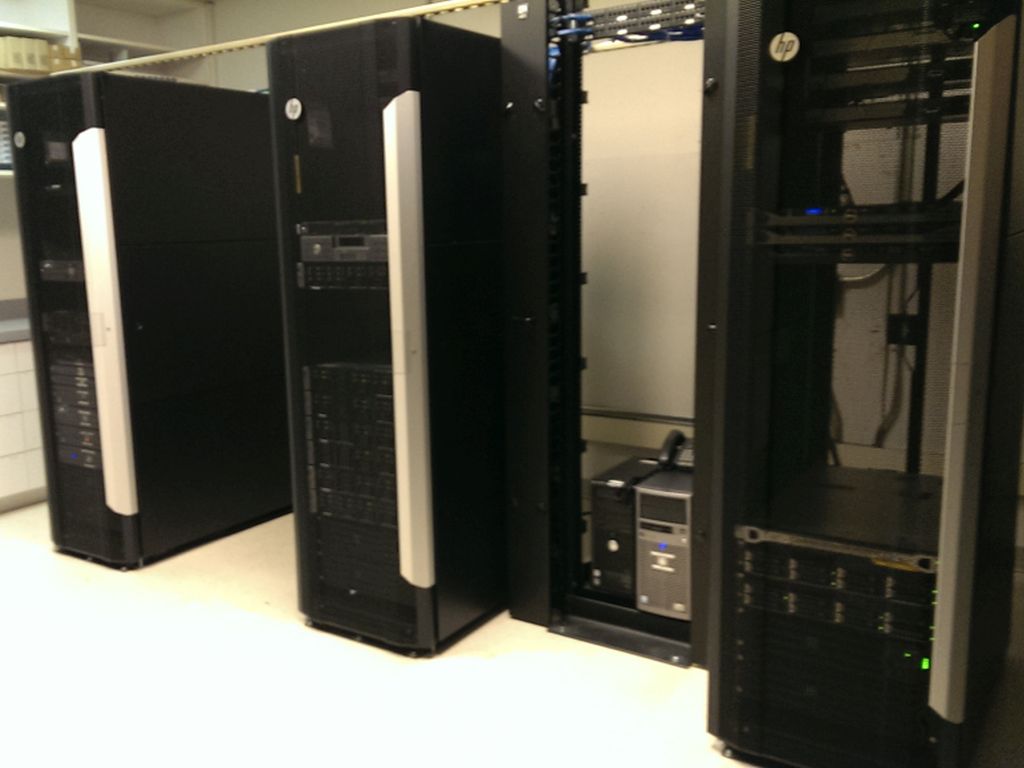

Server Room, Front - After: (Note: space between cabinets was necessary (floor loading restraints), and 2 tower servers awaiting replacement)

Spiration's Server Room - Rear View
Server Room, Rear - Before: (This was the state of the "Server Room", "cable management" when I joined Spiration)
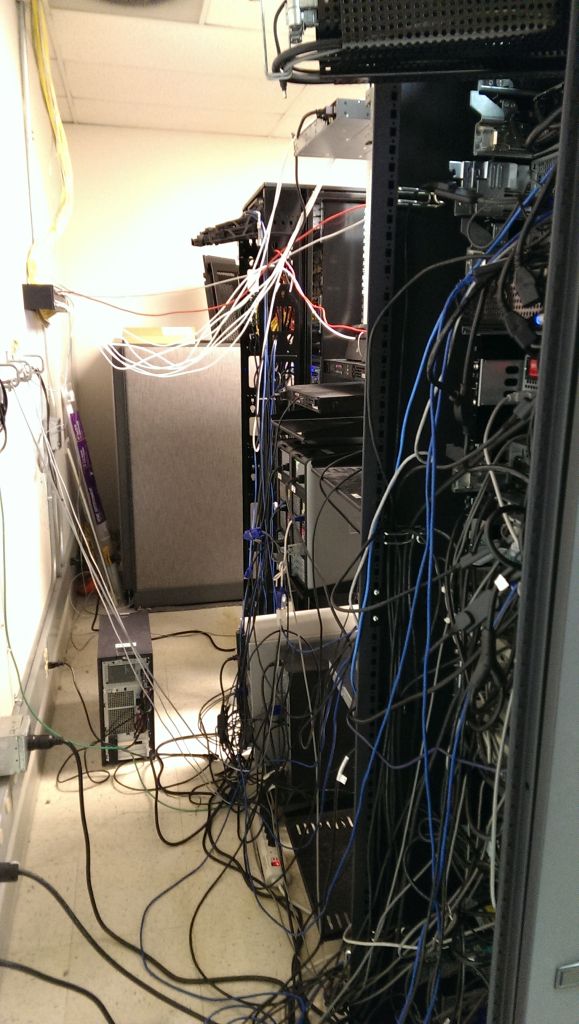
Server Room, Rear - After: (state after I implemented proper cable management and seismic bracing)
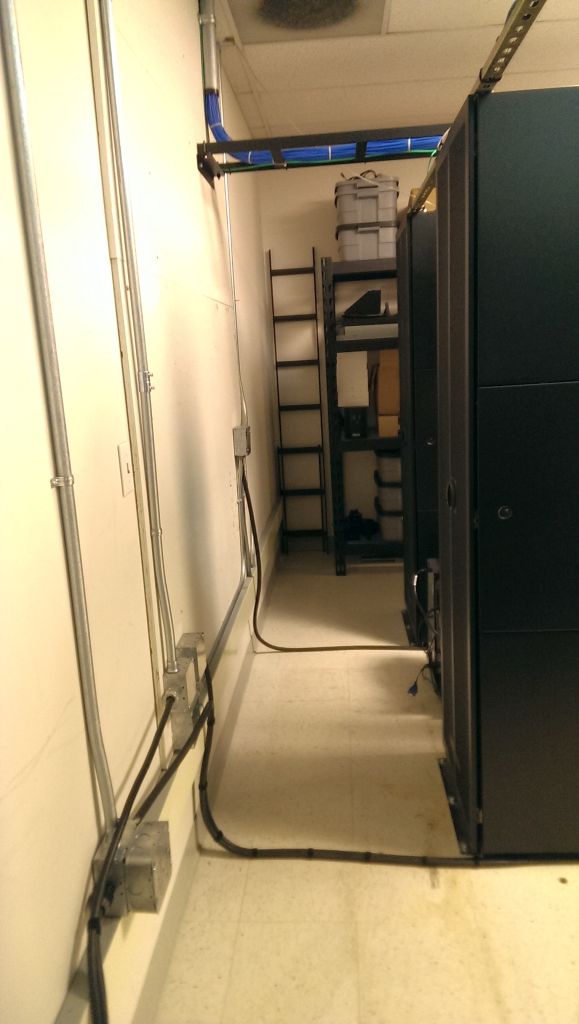

Server Room, Rear - After: (state after I implemented proper cable management and seismic bracing)

Spiration's Telecommunications Room
Telecommunications Room - Before: (This was the state of the "Telecommunications Room" when I joined Spiration)
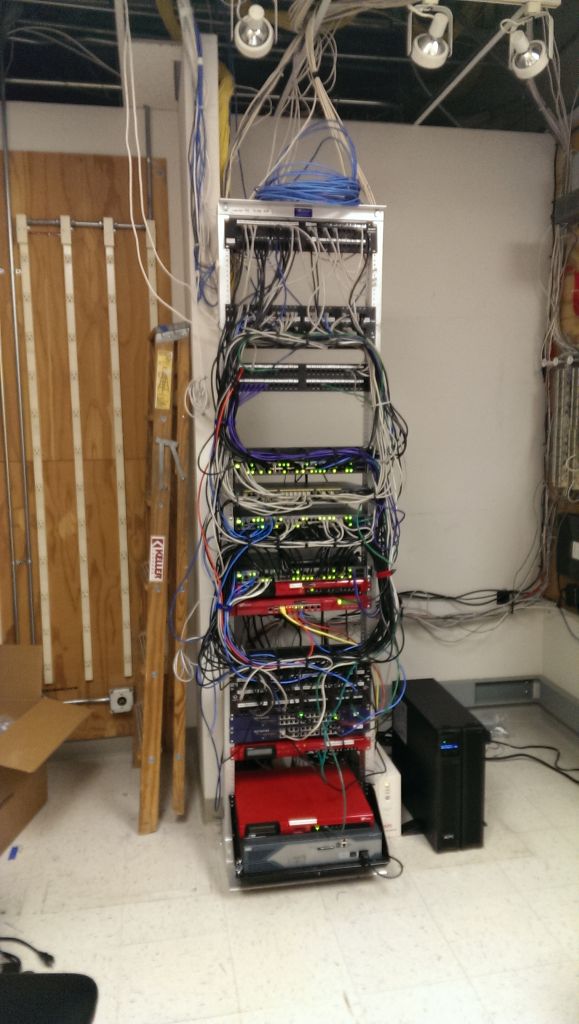
Telecommunications Room - After: (Note: still some legacy cabling that is slowly being replaced/removed)
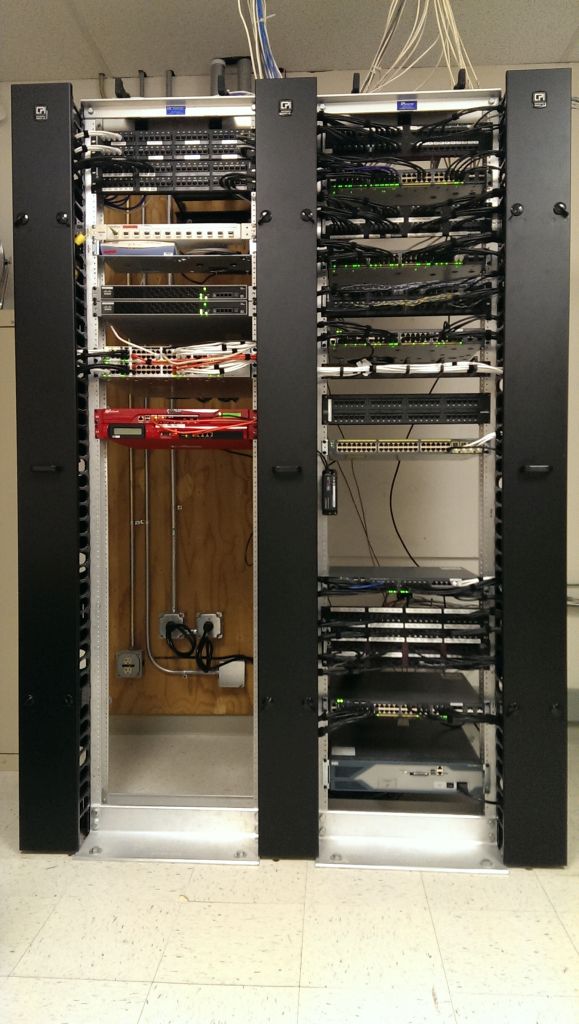

Telecommunications Room - After: (Note: still some legacy cabling that is slowly being replaced/removed)

Cable Management Best Practices
Server Cabinet Cable Management - Before: (This was their idea of cable management)
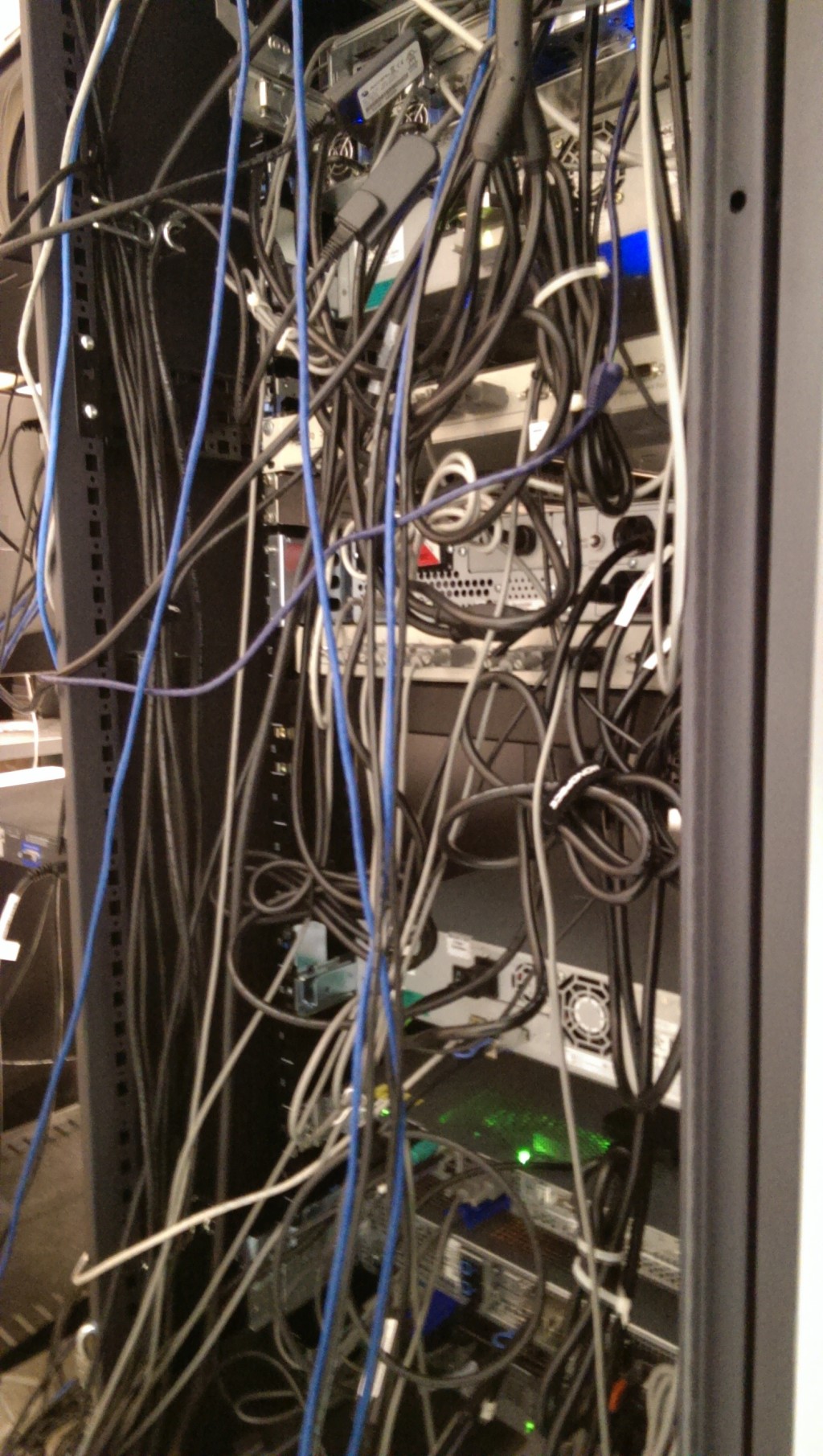
Server Cabinet Cable Management - After: (After I cleaned things up a bit)
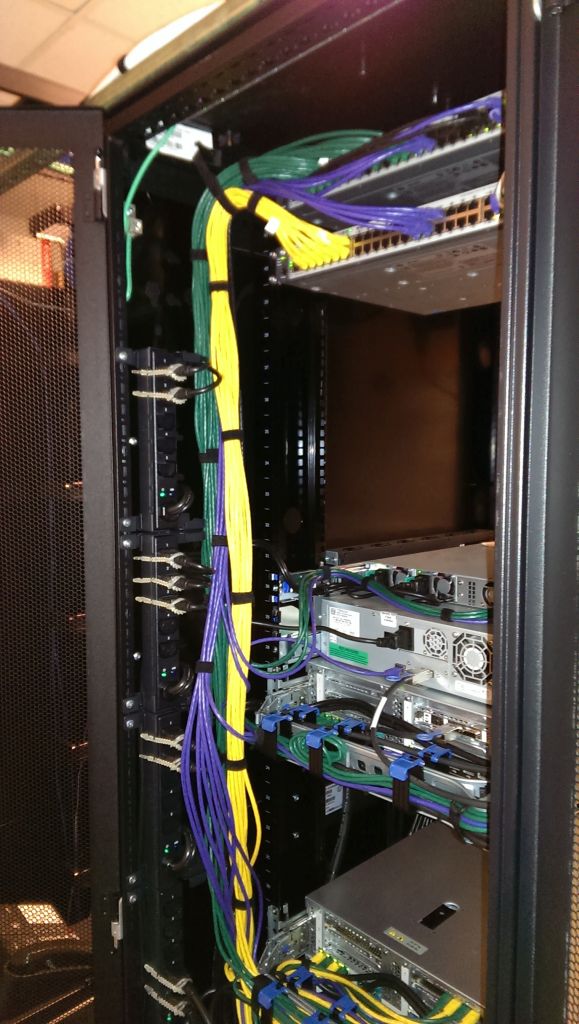

Server Cabinet Cable Management - After: (After I cleaned things up a bit)

Spiration's Conference Room Calendar System
Conference Room Calendar Display- Before: (Admin printed and posted the calendar every morning, in theory anyways)
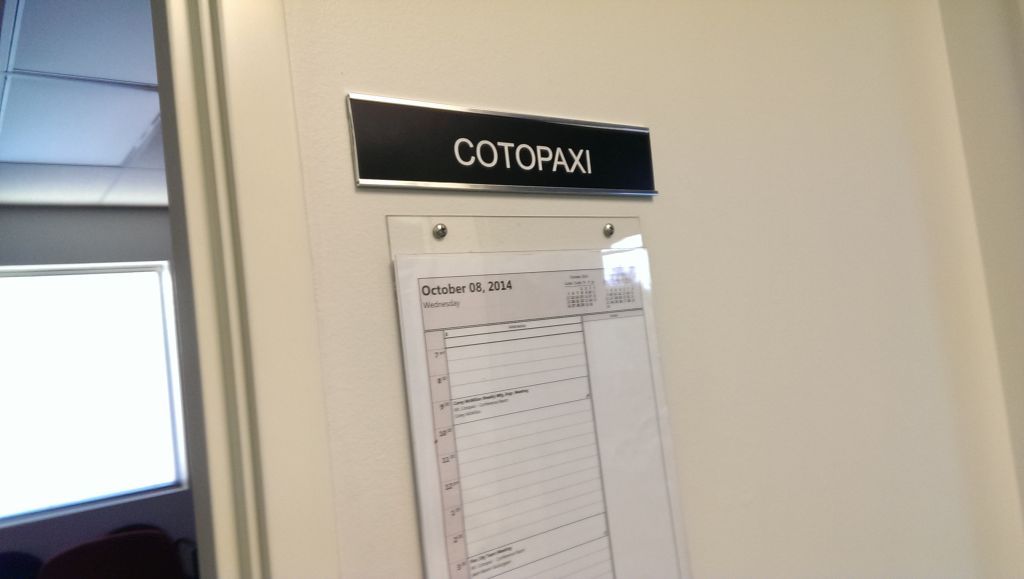
Conference Room Calendar Display - After: (I implemented an interactive scheduling display system that sync'd with Exchange)
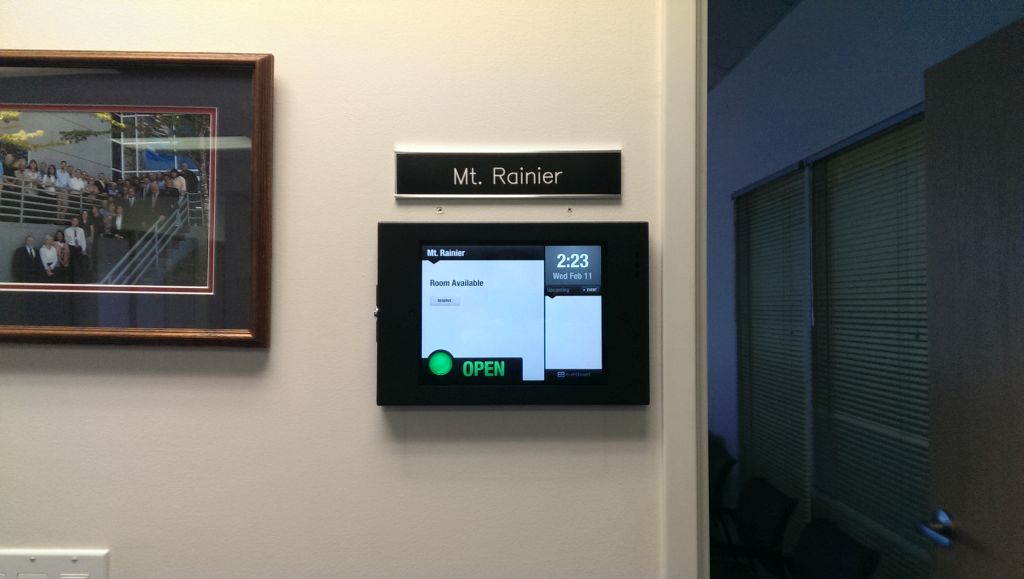

Conference Room Calendar Display - After: (I implemented an interactive scheduling display system that sync'd with Exchange)
